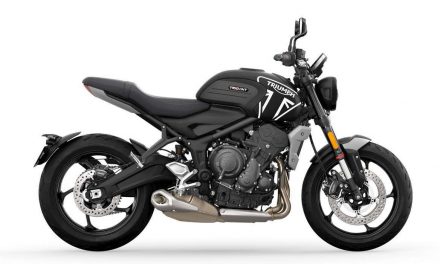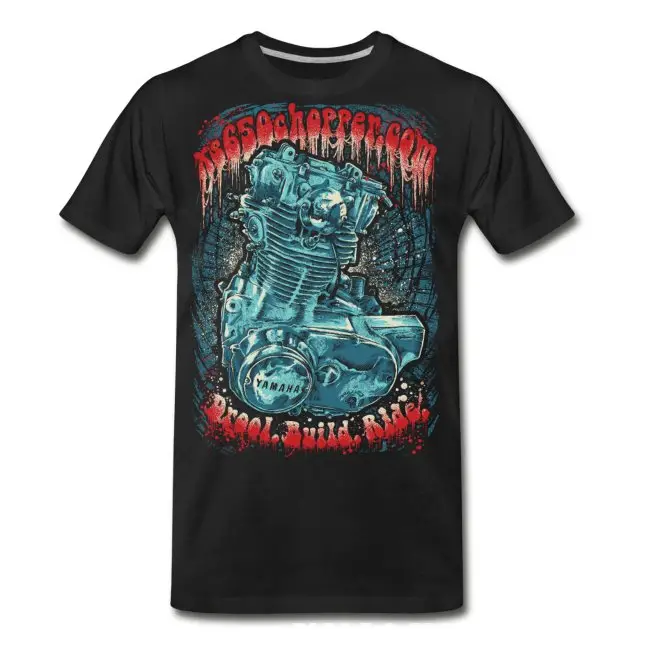Cruising on a free highway on a two-wheeled motor vehicle is always a fun and adrenaline-inducing activity. These machines are called motorcycles and were invented by Gottlieb Daimler and Wilhelm Maybach in Germany, in the year 1885. They are now being used since then from all around the world up to this date. It is slim, fast, easy to maneuver, and a lot cheaper than its four-wheeled vehicle counterpart. It also has basic safety features for communicating with other vehicles on the road namely; headlight, taillight, brake light, and turn signal lights, which makes motorcycles pretty safe to use on roads or highways.
Are motorcycles required to have turn signal lights?
The short answer is yes, but some models are exempted. Turn signal lights are as important as headlights, taillights, and brake lights. They act as an indication of whether the rider wants to turn left or right for the riders around them to slow down or give way when wanted to change lanes. Failure on switching turn signal lights before turning may cause accidents that may lead to both riders’ serious injuries and even death.
Drivers around you, are not aware of your next move until you send them your signals. Not giving any signals means that you are staying in your lane, so there is no reason for drivers around you to slow down for you. Although according on surveys, which were conducted just several years ago, show that 57% of drivers admitted that they don’t use their turn signals, these drivers range from the age of 18 to 24 years old.
The main reason for this is plain laziness, the majority of crashes reported that it is on failure to activate their signal lights. That indicates that no matter what, you need to be very careful and have a safe distance from the vehicle that’s in front of you. Another thing to consider to using the turn signal is, that it is a violation that may cause you to pay from $30 to $100 depending on what the consequences of your actions are. So, it is a must to practice and make it part of your muscle memory when driving especially in high-speed traffics. Considering practice or reading the basics on how to operate a motorcycle to avoid accidents, fines, and damages.
Some bikes are exempted which are old models produced or manufactured before 1973. They are originally not equipped with signal turning lights and are not obliged to install one. Riders of such bikes are required to use hand signals instead, or they can install actual signal turning lights if they wish to do so. But the majority of those old bikes are now collector’s items, preserving their original look and doesn’t drive it too much to prevent more wear and tear.
When will you use the turn signal lights?
Changing lanes – When doing so, you need to turn on your signal lights first, and then drivers around you would notice that, giving them enough time to slow down and giving you space on changing lanes, keep your signals until you’ve got to the desired lane you are merging in. It’s also very important to turn off your signal lights after the fact that you are already on your desired lane. Keeping it on may confuse drivers and riders around you, thinking that you want to change lanes again.
Turning onto a side street – This situation can be very dangerous if not executed properly, the first thing to do is to turn your signal lights whether left or right, and then slow down at a safe pace or sometimes even have a full stop before you can safely turn on your desire. Failing to flick the turning signal lights may confuse drivers surrounding you and left them guessing your intent.
Turning out of a side street – This is one of the best use of turn signal lights and makes you as a driver have less hassle when turning on the side street. Turn your signal light and then vehicles behind you would go to a full stop and give you space to turn onto the side street. This is called the right-of-way for the turning vehicle.
Turning at a stoplight – There are two scenarios for this. First is, if the approaching stoplight has a right turn only or left turn only lane, keep your signals on until you’ve completed turning on your wanted lane. The second is if the approaching stoplight has no right turn only or left turn only lanes, then you need to turn your signal light long before going to the stoplight, this indicates your intent on your surroundings on where your desired lane to go to.
Turning at a stop sign – This is the simplest one. Just flick your switch on which side of the stop sign you are going then merge into that lane until you can reach the stop sign, this scenario is very similar to turning into the side of the street.
Advantages of turn signal lights
It serves as the communication medium of you to other drivers and pedestrians on the road to let them know where you are going and for them to act accordingly. It can also serve as a blind-spot safeguard, which allows riders on your back to honk their horn before you can change lanes.
It also prevents you from having road rages, by simply having the respect and courtesy to send signals to them to avoid hard braking and may even rear-end your bike. It can also minimize your stress on merging into high-speed traffic by amplifying your presence and hopefully, give the appropriate and necessary actions to accommodate you. Another safety feature that involves these lights is using them as hazard lights- which warns them that your bike is in a state of emergency or became a temporary obstruction.
Disadvantages of turn signal lights
These three disadvantages listed are very uncommon and are mainly based on human errors only: First, is when the biker is a newbie and is overwhelmed by the buttons to press or where are the buttons to press and began to panic, in this situation, the biker may lose concentration on the road and may eventually hit or crash onto something.
The second is accidentally flicking the turn signal switch unintentionally, even pro bikers experience this, so being mindful not only on road but also on your bike is a must. Lastly, are broken lights, it is as dangerous as not pressing the switch at all, this is common to those who don’t constantly check their bikes before hitting the road.
Bonus tips on how to make your ride safe
- Wear a helmet – this goes without saying, it is obviously the number one safety essential when riding, but if you still don’t know yet, here it is.
- check your bike before and after every ride – a quick ensure and testing of the brakes, lights, horns and all necessary kinds of stuff before and after riding is a game-changer, this can prevent small to huge accidents, so make it a habit.
- Ride defensively – this means that, in whatever situation you are in, make sure that cars or any other four-wheeled vehicle, acknowledge your presence, bikes are so slim that they can easily fall onto the driver’s blind spot. You can be visible by turning on your daytime running light(if your bike has it) or wear at least reflective clothing just to be visible on road, especially at night.
- Obey the rules of the road – The best thing you can do on the street, is recall all the rules before riding for you to be safe on the street.
- Be comfortable on your motorcycle – there are a lot of types of bikes, they differ in transmission, categories, sizes, forms, purpose, etc. Whatever your bike is, make sure that you are in your most comfortable place. This is very useful, especially on long rides.
- Being aware of what is today’s weather – checking your current location’s weather or destination’s weather is also important, not having appropriate clothing and geats may lead to accidents. Some tires are very slippery on wet pavement. You must at least check the weather forecast first before riding your bike.
- Lastly, do not drive under the influence of alcohol – statistic report says that this is one of the major fatality reports on motorcycle riders. Don’t be a part of it, be responsible for driving, if you feel drowsy, just don’t drive. This may cause your life.
Conclusion
Turn signal lights are a very essential part of a motorcycle, it keeps you and the riders around you safe from collision, damage, and injuries. Being aware of vehicles around you should be constantly checked. Make a routine to check your bike before hitting the road and use the necessary safety gear and equipment. At the end of the day, it is still your life that matters the most, so be mindful, patient, and obedient to traffic rules for you to have a safe ride and arrive at your destination alive.








